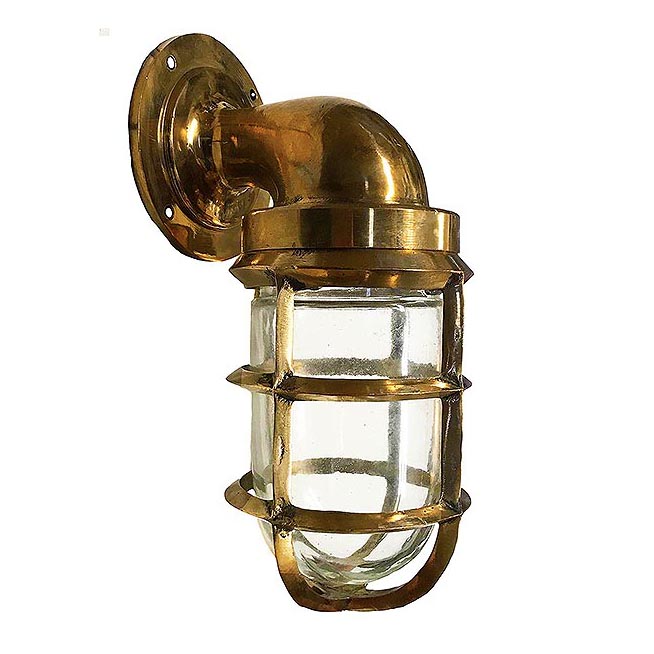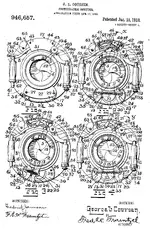Another beach find that has me puzzled as to it's purpose. It's a little over 2 inches in diameter. There are real fine threads both inside and outside the center hub with that ring with the teeth on it, is threaded onto those outer threads. The only other threaded hole is the one on that little bump sticking out of the outer rim. There are 14 other holes through that outer section. but, none look to be threaded. Four of the big ones are countersunk. There are 3 patent pending dates stamped into it.....Apr 21, 1908, Aug 31, 1909, and Jan 18, 1910. It also says Pat. in USA. All ideas welcome!
Navigation
Install the app
How to install the app on iOS
Follow along with the video below to see how to install our site as a web app on your home screen.
Note: This feature may not be available in some browsers.
More options
You are using an out of date browser. It may not display this or other websites correctly.
You should upgrade or use an alternative browser.
You should upgrade or use an alternative browser.
✅ SOLVED Another oddball brass item
- Thread starter cudamark
- Start date
- Thread starter
- #3
I've dealt with packing nuts on all sorts of equipment, but, never one like this. Seems to flimsy for one. I've never seen a packing nut with that many holes going through it either. The threads and nut on the outside of the center hub don't make sense to me for sealing either. Inside, I can understand, but, outside?
Upvote
1
Older The Better
Silver Member
- Apr 24, 2017
- 3,372
- 6,639
- Detector(s) used
- Whites Eagle Spectrum
- Primary Interest:
- All Treasure Hunting
Just guessing but looks to me like there’s a hole on the side that you would set a screw into and use pressure to hold your piece to something it sat over. In my experience as an electrician I see something similar with grounding bushings… so could it be some kind of deal meant to fit over a pipe and maybe act as a reducer of sorts? Also looks like it may have a lock ring too, which is usually used to secure a connector to a box.
Upvote
0
rebelminer
Jr. Member
- Jan 28, 2023
- 37
- 63
I am on the same thought as Cudamark. This is some kind of mechanical seal for a shaft and it's an adjustable seal like pump packing seals. I have also run across similar seals like this one but not one exactly like it. There would be a lock washer under that nut that would be bent up to hold the nut still because they are not completely tightened. Same as a bearing lock....Heck, it prbably is a bearing housing and no packing at all , just grease.
Upvote
0
The part with the “teeth” appears to be a castellated retaining ring/nut. I’ve installed hundreds of them, but I have no idea about the whole item. Does the toothed ring turn and come off separately?
Upvote
0
glass half fool
Bronze Member
- Jul 17, 2017
- 1,069
- 1,923
- Detector(s) used
- White 5900DiPro
- Primary Interest:
- All Treasure Hunting
Maybe a part to a brass oil lantern or electric light
Upvote
0
CanSlawKing
Jr. Member
- May 9, 2016
- 74
- 151
- Detector(s) used
- Garrett Ace 250
- Primary Interest:
- All Treasure Hunting
Maybe the base for an old bulkhead light?


Upvote
0
The castellated nut is generally to retain position or to prevent accidental loosening of the nut. This is often used to ensure that wheel assemblies do not get loose on industrial vehicles: the rear “steer wheels” on a forklift are usually locked down to the axle assy in such a way. If you look at your pic, that I zoomed and reposted, you’ll see a groove above one tooth. This is normally for tightening, by inserting a small punch and tapping it with a hammer to achieve fine alignment. This is usually locked into place with a cotter pin. I can’t see a hole for the pin. There may be a piece missing from yours or I just can see it due to photo angles.
Attachments
Upvote
1
Red-Coat
Gold Member
I think Matt and Tamrock have it right.
I cross-referenced the three patent dates to see if I could find either a common inventor/assignee, or some commonality of usage application. What came up were three camera shutter patents:
- Roller Blind Shutter (885,236) granted to W.F. Folmer on 21st April 1908
- Photographic shutter (932,381) granted to W.F. Folmer on 31st August 1909
- Photographic Shutter (946,657) granted to G.L. Coursen on 18th January 1910.
The first two patents were assigned to the Eastman Kodak Company and the third one to the Wollensak Optical Company. Here’s an image from that later patent which shows some kind of ring housing with similarities to the posted item:

I cross-referenced the three patent dates to see if I could find either a common inventor/assignee, or some commonality of usage application. What came up were three camera shutter patents:
- Roller Blind Shutter (885,236) granted to W.F. Folmer on 21st April 1908
- Photographic shutter (932,381) granted to W.F. Folmer on 31st August 1909
- Photographic Shutter (946,657) granted to G.L. Coursen on 18th January 1910.
The first two patents were assigned to the Eastman Kodak Company and the third one to the Wollensak Optical Company. Here’s an image from that later patent which shows some kind of ring housing with similarities to the posted item:

Upvote
5
CanSlawKing
Jr. Member
- May 9, 2016
- 74
- 151
- Detector(s) used
- Garrett Ace 250
- Primary Interest:
- All Treasure Hunting
Nice work, Red-Coat! Did you write a script to cross-reference those dates or did you just do it "by hand"?I think Matt and Tamrock have it right.
I cross-referenced the three patent dates to see if I could find either a common inventor/assignee, or some commonality of usage application. What came up were three camera shutter patents:
- Roller Blind Shutter (885,236) granted to W.F. Folmer on 21st April 1908
- Photographic shutter (932,381) granted to W.F. Folmer on 31st August 1909
- Photographic Shutter (946,657) granted to G.L. Coursen on 18th January 1910.
The first two patents were assigned to the Eastman Kodak Company and the third one to the Wollensak Optical Company. Here’s an image from that later patent which shows some kind of ring housing with similarities to the posted item:
View attachment 2076216
Upvote
0
ticndig
Silver Member
- Apr 17, 2009
- 3,318
- 7,773
- 🥇 Banner finds
- 1
- Detector(s) used
- T-2-SE
- Primary Interest:
- All Treasure Hunting
doesn't seem too modern to me , care to share more detail?I go with a modern water sprinkler part
There are 3 patent pending dates stamped into it.....Apr 21, 1908, Aug 31, 1909, and Jan 18, 1910. It also says Pat. in USA. All ideas welcome
Upvote
0
Top Member Reactions
-
 3498
3498 -
 1978
1978 -
 1938
1938 -
 1192
1192 -
 1114
1114 -
 1005
1005 -
 870
870 -
 845
845 -
 816
816 -
 797
797 -
 745
745 -
 677
677 -
 579
579 -
 571
571 -
 497
497 -
 447
447 -
 434
434 -
E
415
-
 400
400 -
 390
390
Users who are viewing this thread
Total: 2 (members: 0, guests: 2)









